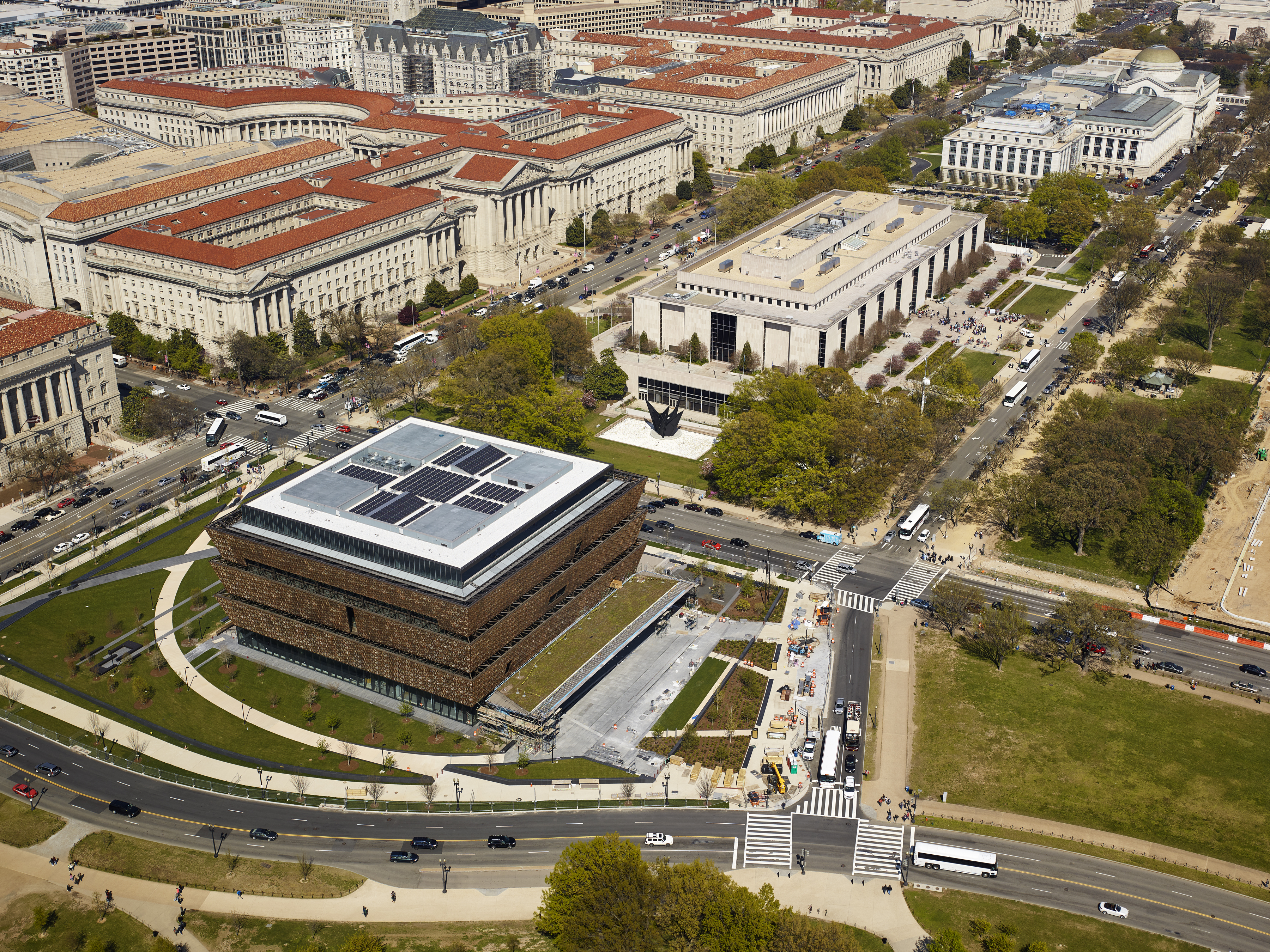When the National Museum of African American History and Culture opened last month, thousands of people gathered on the National Mall for an emotional dedication. The museum has been in the making for almost 13 years. Now it is finally complete and brings with it powerful stories of black experiences that are critical to American history and culture.
But it’s not just the stories told inside the museum that are inspiring. Its place right on the National Mall is symbolic. Professor Lisa Benton-Short, author of the recent book “The National Mall: No Ordinary Public Space,” spoke with George Washington Today and explained why the location of the museum in our nation’s capital is so important.
Q: You released your book The National Mall: No Ordinary Public Space this year. What can you tell us about the newest addition to the National Mall—the National Museum of African American History and Culture?
A: The grand opening of the National Museum of African American History and Culture marks an important moment. Inside the new 400,000-square-foot museum are approximately 3,500 artifacts on display that share truths about America’s past and tell stories about 400 years of black life in America. The new museum allows Americans to walk the path from slavery to civil rights to today’s Black Lives Matter movement.
Q: How does the museum's location on the National Mall—considered by some "America's front yard”—expand our view of history and identity in the United States?
A: As much as what we will learn and experience because of what is inside the museum, its mere presence on the Mall also makes a difference. It’s all about location, location, location. The Mall is a stage for our democracy, a place where we tell our national story. Being “on the Mall” makes a powerful statement about a shared identify, about belonging and about recognition. It confers national legitimacy. The new museum corrects the implicit bias on the Mall toward a narrow definition of national history and national memory that has largely ignored minorities. Its presence on the Mall contributes to a broader definition of national history and national identity. Visitors to the Mall now see a place that more closely reflects the diversity of our nation and our national experience.
The National Museum of African American History and Culture and the recently completed MLK Memorial, which was finished in 2014, are more than just buildings or statues. They represent the dream for equality and justice and a full inclusive democracy. These recent additions on the Mall remind us about the power of public spaces to tell a fuller story of America.
Q: David Adjaye, the lead designer of the building, recently discussed the museum's architecture with the New York Times. What does the museum's aesthetic and overall physical appearance add to the Mall?
A: The building itself is certainly distinctive: The bronze-meshed ziggurat moves upwards toward the sky and into the light. It's a very different look on the Mall, which has traditionally been dominated by white stone and neo-classical architecture. The new museum highlights its broader purpose, which is to tell the complex and diverse story of how African Americans contributed to the making of America. For example, the bronze-mesh casing highlights the artisanship of African American ironworkers. Once you understand that, you realize that the building's form and look are appropriate to the Mall. This new museum, like the National Museum of the American Indian (also on the Mall), contributes a new aesthetic that reflects the unique cultural contributions to American history—both in our culture and in our landscape.



